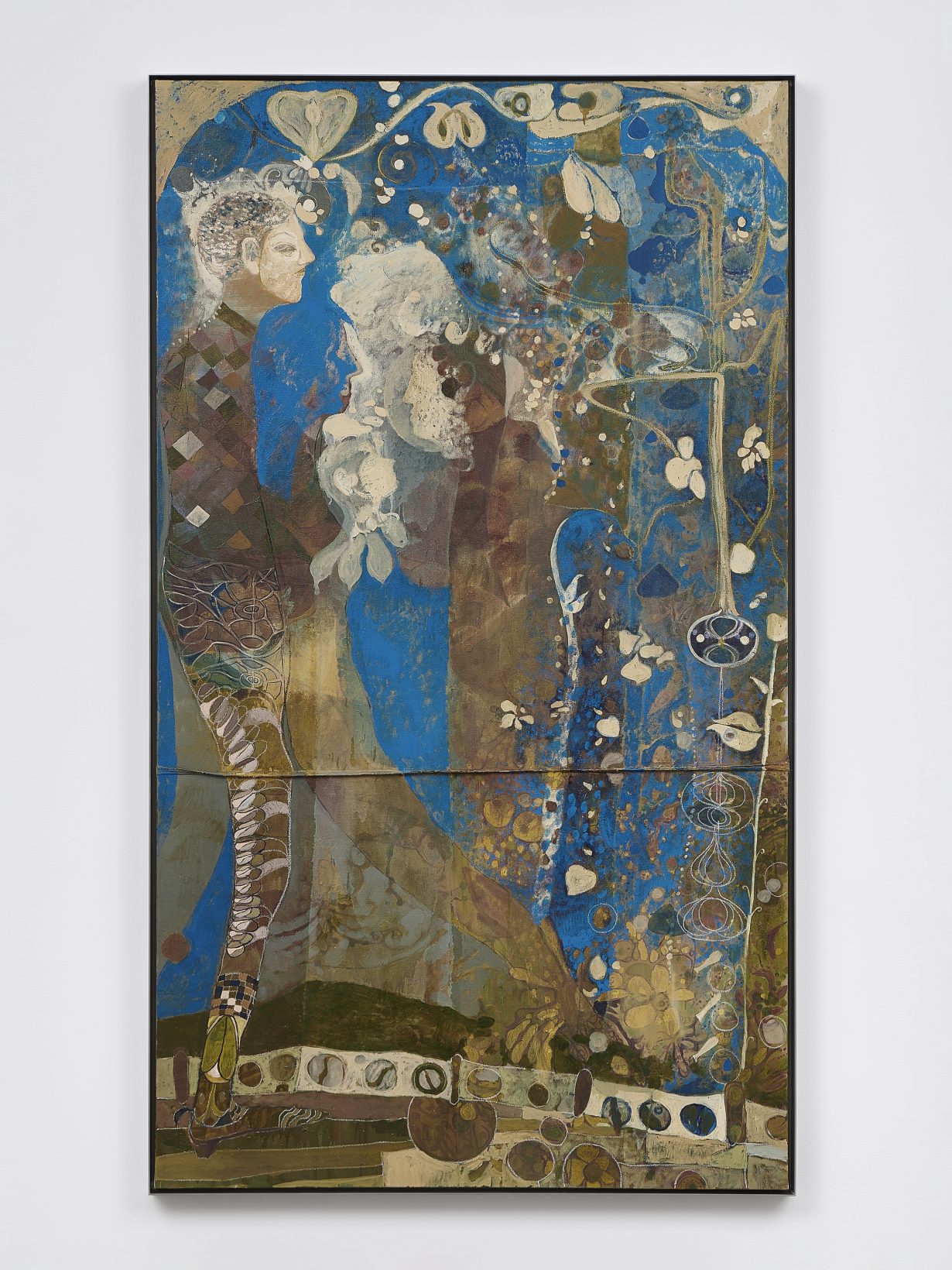Posadila sam kost u zimskom vrtu at White Cube Mason’s Yard, London sees an artist duo combat past trauma, prevailing uncertainty and tentative utopianism
Artists Bruno Pogačnik Tremow and Ivana Vukšić, working together as TARWUK, came of age during the Yugoslav Wars of the 1990s. Land was razed and borders redrawn; acts of ethnic cleansing scarred generations and many sought refuge around the world. The figurative paintings and sculptures of Posadila sam kost u zimskom vrtu (I planted a bone in the winter garden) bear the spectre of it all.
As is often the case for art made after periods of war, the combination of past trauma, prevailing uncertainty and tentative utopianism make their mark on much of TARWUK’s work. They’ve been pursuing something transformative in their idea of posthistory: figures are sculpted, often at a large scale (but dainty and small here), with both an uncomfortable tactility and in a state of elusive metamorphosis; dramatic and almost psychedelic paintings capture expansive scenes yet with a muted approach to colour. Two figures embrace under an archway in MRTISKLAAH_droW_eht_fo_esnecnI_eulb_A (all works 2022; their titles can be read backwards – ‘A blue Incense of the Word’), and in the painting’s composition tower above a somewhat cross-sectional imitation of landscape. Both land and humanoid shapes are rendered in earthy tones, the surrounding (or intervening) space a byzantine blue. One face seems masked while the other melts away into surrounding figures and ornate detailing. Theatricality and romantic grandeur are dulled, riven by a protruding fold where the canvas is sewn together. In MRTISKLAAH_yrteop_fo_lliH_a_ma_I (‘I am a Hill of poetry’), silhouettes, Alemannic masks and Greek patterning adorn two canvases, but the eye is drawn towards a deathly figure more at home in a William Blake, all skull and muscular sinew, outstretched palm beckoning the figures below. It’s as if the dissonance has pulled the two canvases apart, vertically separated by a couple of centimetres.

The artists’ magpie instinct for European art history – often harking back to Croatia’s Austro-Hungarian period, piecing together what they can – is a dominant mode. MRTISKLAAH_droW_eht_fo_esnecnI_eulb_A and MRTISKLAAH_emit_ot_neht_tneidebo_eb_su_teL (‘Let us be obedient then to time’) recall Gustav Klimt; the flow of certain linework bears traces of art nouveau, even elements of Aubrey Beardsley’s dark languor; harlequin visages recur throughout, lending a dissonant sense of festivity. A series of sculptures evoke ruinous figures and structures in epoxy clay and plaster (among other materials). They’ve a metaphysical air, and while directed at a no-doubt-powerful notion of antimonumentalism, feel conceptually light – and no more texturally nuanced than discoloured plasticine.
There’s a nagging sensation to be fought when you leave. For its moments of both seductive halcyon and affecting ominosity, many of these works draw no strength from retreating into dreams, nor find catharsis in pain. The title evokes a mourning, but also a frustrated – or paradoxical – attempt at renewal; and so attempts at raw emotion in the wake of war and suffering disappear into art history – and feel somehow flatter for it.
Posadila sam kost u zimskom vrtu at White Cube Mason’s Yard, London, through 18 March
